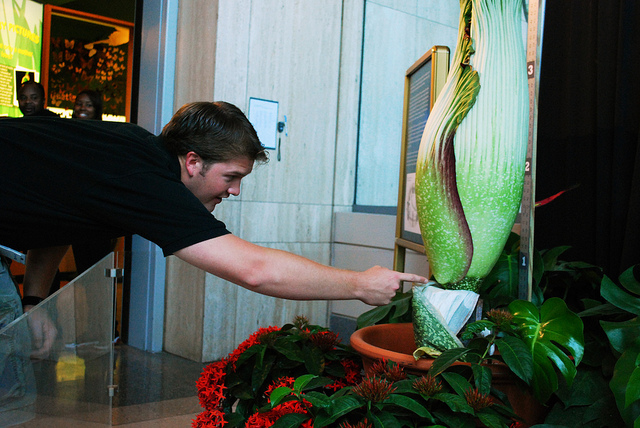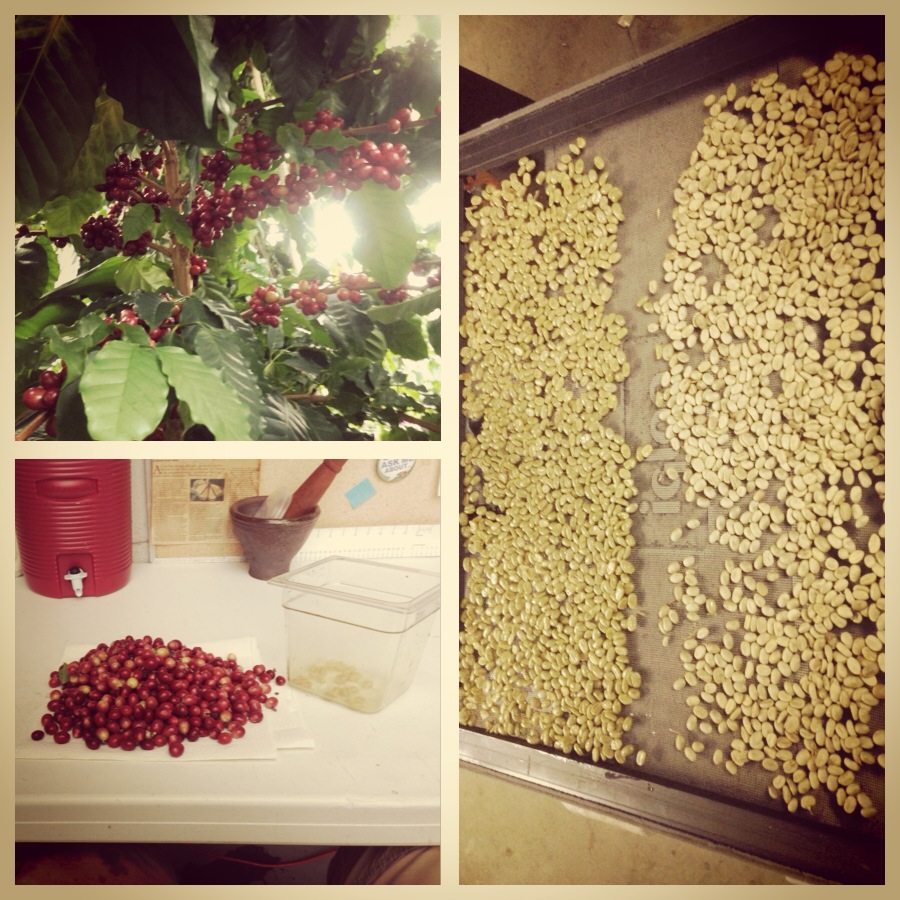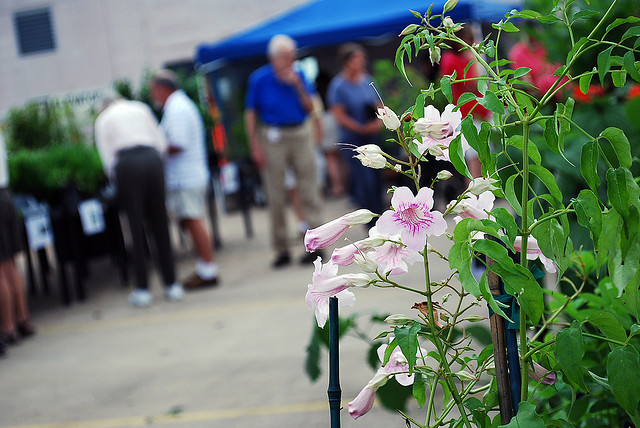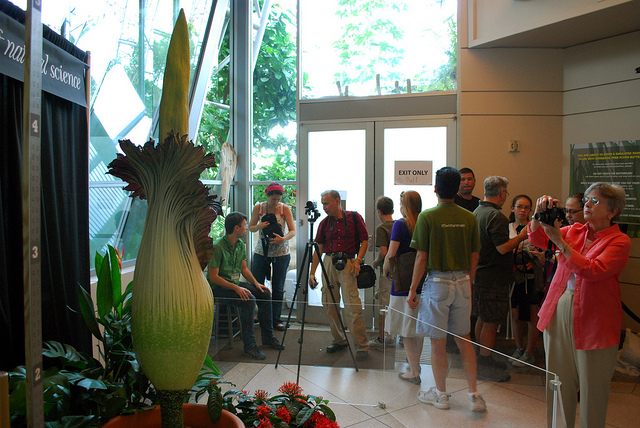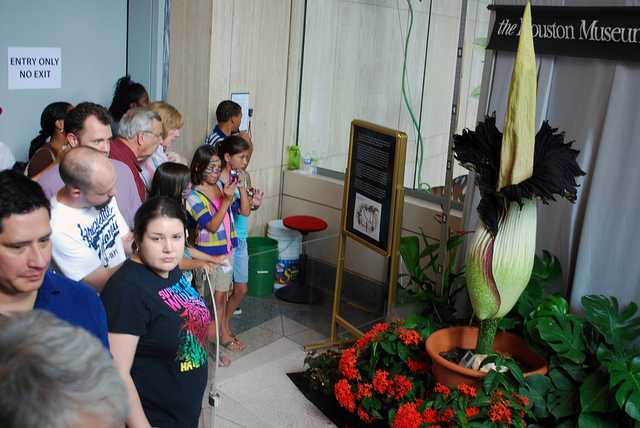Editor’s Note: After four and a half years, Zac Stayton, Horticulturist for the Cockrell Butterfly Center, is leaving HMNS for a new job as a Project Manager for the grower Color Spot. I sat down with him this week to discuss his time at HMNS, his favorite projects and what he’ll be up to next.
Vincent Covatto: So Zac, we’re very excited for you about your new prospects, but sad that you’ll be leaving. Could you tell us a little about what your job has entailed here at HMNS?
Zac Stayton: Basically, the beautification and upkeep of the Butterfly Center itself, from making sure all the plants are blooming, which ends up feeding the butterflies, to maintaining the tropical fruits, pollinating the chocolate trees and the coffee. Pretty much everything that goes into the conservatory itself, from irrigation and upkeep of the waterfall to electrical and everything in between.
 VC: So we’ve essentially been running you ragged for the last five years.
VC: So we’ve essentially been running you ragged for the last five years.
ZS: [laughing] You could almost make it a job for a team of four.
VC: Or one Zac.
ZS: [laughing] Yeah, yeah.
VC: What are some of your favorite things that you’ve worked on in your time here?
ZS: Of course Lois and some of the tropical flowers that you wouldn’t normally get to encounter here in the Houston climate. There are some crazy orchids that we’ve got in there. We’ve got one in particular that’s endangered, and almost went extinct when the Japanese invaded a small island off the coast of Taiwan, so it’s very, very rare. Just getting to see some those plants bloom, I mean I’m one of the few people that ever gets to grow these plants, is really a great experience.
Also being able to grow coffee and chocolate, pineapples and vanilla — which you wouldn’t get to do outside of the glassed-in enclosure there in the conservatory.
VC: I remember this past winter we had had a coffee tasting in the conservatory. Was that sort of your own pet project?
ZS: Yeah, that coffee tree was actually kind of a fluke, we call it a volunteer. We took an old [tree] out when I first started and it dropped one single seed and it ended up growing into this tree that we didn’t even mean to plant there. And so, I guess it was maybe last September, October, I looked at it and it was just covered in berries, and it was like, well we’d better do something with all this coffee, rather than just letting it all go to waste.
So I went through and kind of studied how to do it and there’s not a lot of — like a lot of things in the Butterfly Center… you can’t just google these plants and see what to do. So I had to do a lot of calling around.
Here in Houston there’s plenty of coffee shops that will roast the beans for you, but we had undried beans. And it was like, ok how do we get these to the point where we can roast them. So we really had to break it down step by step and do some trial and error, with the whole process — from cracking the beans and drying them and roasting them and then finally grinding them and finally drinking them. It was pretty eye opening to see what actually goes into your daily cup of coffee.
VC: [laughing] Or four…
ZS: [laughing] Yeah depending on the day. Two for me at least. Minimum.
VC: Well I bet that was your favorite cup — the best coffee you’d ever had.
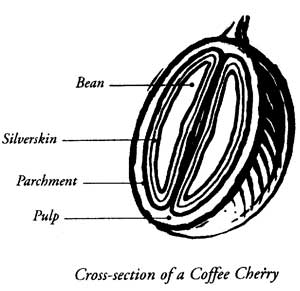 ZS: Definitely. Definitely, yeah, I mean I think everybody in the Butterfly Center got blisters on their fingers just having to — there’s what’s called parchment coffee and you basically have to take this thin layer of parchment off of each of the several thousand beans that we had. And they have machines for that for that kind of stuff in the tropics, but I couldn’t find one, at least in the area. I think the closest one was in Hawaii or Coast Rica, so we had to do it all by hand. And so you definitely get a new appreciation for coffee.
ZS: Definitely. Definitely, yeah, I mean I think everybody in the Butterfly Center got blisters on their fingers just having to — there’s what’s called parchment coffee and you basically have to take this thin layer of parchment off of each of the several thousand beans that we had. And they have machines for that for that kind of stuff in the tropics, but I couldn’t find one, at least in the area. I think the closest one was in Hawaii or Coast Rica, so we had to do it all by hand. And so you definitely get a new appreciation for coffee.
VC: Do you have a favorite plant, either inside the conservatory itself or something you’re really interested in?
ZS: I have a favorite plant family. I like bromeliads. So everything related to — the closest relative would be pineapples, but they also include Spanish moss [so there’s a big range]. I actually grew these in Hawaii before I came here so that’s kind of been my expertise, if you will, I’ve channeled myself into those a little bit more than some of the other plant species.
VC: So what is your new job?
ZS: [I’ll be working for] Color Spot the largest grower in the U.S. right now, and they have several locations — I thinking six or seven in Texas — but the branch that I’ll be at is in Huntsville. And I’ll be the production manager, making sure the timing goes through. Most the plants there are bedding plants, they’re seasonal.
For example, when Christmas time rolls around it’s going to be my job to make sure that all the poinsettias and mums and things like that are all ready, that they’re nice and red and at a specific time are on the shelves ready for people to buy.
VC: So you’ll be making sure that everything is timed right.
ZS: Exactly.
VC: So you determine when things are planted, when they’re harvested?
ZS: Exactly. There are a couple teams of growers, so I’ll be the Production Manager, from the time the plant gets put in the soil, until the time it gets on a truck headed to the main customers — I make sure it’s all on schedule.
If you’ve ever bought a plant from Walmart or Home Depot, or Lowes or Kroger, any of those big box stores, especially here in Texas, it’s come from Color Spot. Also smaller nurseries around town will buy their plants.
VC: So would you say this job is a continuation of the sort of work you’ve done for the museum or is it more of a fresh start?
ZS: It’s kind of a fresh start. It’s changing gears from tropicals to basically what grows well around here. A big part of it though will be — working here I learned a lot of the butterfly attractants for our area, although I work with tropicals on a daily basis there are a lot of calls asking “well what can I plant in my backyard?” So learned a lot about our native butterflies here and what plants attract them, and what plants you can put in your garden. And that’s a big part of what I’m going to be growing at Color Spot — butterfly attractants, nectar plants — so there is an overlap there.
VC: And you have the different pollinators to take into account with that as well?
ZS: Yes, exactly. Everything about pollination and pollinators I learned here firsthand. When I first started I didn’t know much about butterflies — I knew the monarch, the one that everybody knows, and other than that I didn’t know that there were 15 other species of butterflies that are native here, to Houston. That is something I’ve definitely gained from my time here.
VC: Is there anything that you’re really excited about growing or working on at Color Spot?
ZS: There are a lot of new bulbs, tulips and things like that, that we get to do trials with. Before they even hit the market we get to take some of these bulbs that these growers bring from the Netherlands and get to try them out, test them out, in our greenhouses. We get to be on the front line before anyone else [in the area] knows about them — that’s something I’m really excited about.
VC: I’ve been reading through some archival press from when Lois was blooming, and I saw a couple of places where you’d been quoted. I think that’s how some of our Houston audience got to know you — through that experience. Can we count on you to come back down the next time she’s in bloom?
ZS: Oh yeah definitely. I’ll be here of course, I wouldn’t miss it.
VC: Do you think you’ll become pen pals with her?
ZS: [laughing] Oh no, I don’t think so. No more anthropomorphizing Lois, although that was funny and clever when that happened.
The people though, that’s what made Lois what she was. Lois was just a flower, and people would probably gasp hearing me say that, but it was the whole community rallying around Lois that was the coolest part of the whole thing.
80,000 plus people coming out, plus the people —you know, we had people in Australia saying “get out of the way! We can’t see Lois on the webcam!” So just the fact that it was everybody at the same time, seeing the same thing and it just blew up on social media. And that’s what I though was so cool, everybody so in synch, waiting, just to see what would happen with Lois.
As a horticulturist it was really cool to see just everyone getting around it and thinking it was as cool as I did. Normally, you know I’ll be like “ooo look at this cool plant!” and people couldn’t care less, but to see everyone else sharing that passion — that was the best part about it.
VC: Is there anything else you’d like to say or share with our readers on the blog?
ZS: It’s been a fantastic four and a half years here, and honestly all of the events that we did, it wouldn’t have been possible without people getting as geeky about plants as me.
From the miracle fruit tasting, and the chocolate and the coffee — to see everybody getting around it, that was the best.
Lois, kind of spurred everybody on to find this new kind of passion in horticulture. There were a lot of parents that came up to me and said “I asked my kid what they want to do and now they all want to be a horticulturist.” And that’s the best thing that could come from it, I think, is a whole new generation of people that find plants as interesting as I do.


